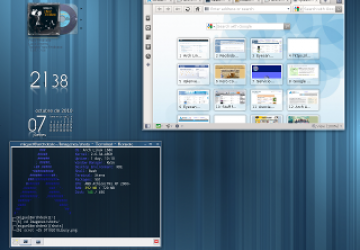Spotlight on Linux: Arch Linux 2010.05

One of the top 10 most popular distributions on Distrowatch.com's page hit ranking is Arch Linux. It attracts a lot of users because of its ability to give the user a feeling of ownership without an excessive amount of time and effort. It began life in 2002 and has been increasing in popularity since. Besides the great operating system, the project offers a moderate sized community, a friendly and active user forum, and lots of easy-to-follow documentation.
Arch is developed as a rolling release system, which means it's updated regularly through the package manager rather than being reinstalled every six months like some other distros. However, developers do release a new core and net image every six to nine months for new users or those wishing a clean start. It's a live CD, but don't expect a fancy desktop. It boots to a commandline interface to allow users a system from which to work. But have no fear, the install procedure isn't really very different from Slackware's. It is a wizard that will walk the user through most of the procedure. However, prospective users might want to visit the Arch Wiki and make a few notes before starting.
The primary advantage of Arch Linux is that one can build their system to their own taste and needs. You can make it as light or full-featured as you want. You can even build packages from the source if you so desire. Another advantage is high performance. One disadvantage is that you will need to be familiar with your hardware, and you will have to set up a few configuration files by hand with a text editor. Again, refer to the Official Arch Linux Install Guide or the unofficial Beginners' Guide for full details. Documentation is included on the install CD as well at /usr/share/aif/docs/official_installation_guide_en.
It's your choice, but any of the known desktops are available for installation as is most any piece of software you might need. After the install, Pacman can install additional software and keep your Arch system updated. It is similar to APT at the commandline and can install, uninstall, update, search repositories, and query installation data.
Arch isn't for the timid, but once the system is installed users are usually very happy, and Arch tends to receive positive reviews. So, if you'd like full control over the system you are going to run, then Arch is a very good choice. For those that might prefer a more traditional install resulting in a full desktop in just a few clicks The Chakra Project and ArchBang are two suggestions.
Screenshot by Arch user mcordv.










